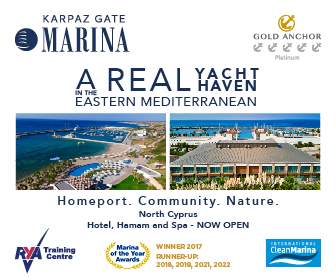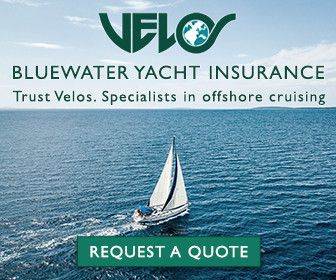Norway - Facts
- Norway is a country located in Northern Europe. The capital and largest city is Oslo.
- Norway occupies the western side of the Scandinavian peninsula, a mountainous forested land, with deep dramatic fjords cutting into the coast. This wild grandeur makes Norway one of the most beautifully scenic countries in the world.
- The country has a population of 5.4 million people and the official language is Norwegian.
- Norway is part of the European Economic Area (EEA) and the Schengen area and the currency is Norwegian crowns (NOK). For specifics, see General Info.
- The timezone in Norway is UTC (+1). Daylight saving time UTC (+2).
- Although the number of cruising boats visiting the northern part of Norway is still relatively small, this area often has warmer and drier summers than further south, with the added advantage of many more hours of daylight. See Weather below for more details.
- A chain of islands stretches parallel to the western coast and extends almost as far as the North Cape. They provide a huge amount of sheltered water for cruising and many safe anchorages.
- The majestic fjords indenting the mainland coast cannot fail to impress, but as the anchorages in many of the fjords are extremely deep, forward planning is required to find a quay or pontoon to tie up to.
- The south and east coasts of Norway are very active boating areas and have more crowded destinations. The scenery is not so dramatic but still most attractive.
- Popular destinations beyond the Arctic Circle include Spitsbergen (Svalbard) and, if not quite so adventurous, the Lofoten Islands.
- There are relatively few commercial marinas still, but docking or mooring provisions for visiting yachts can be found in nearly all ports, although they are not always available for boats over 13m. Some docks may be privately owned and permission to use it should be obtained first. Anchoring is free everywhere.
- Due to the fishing and oil industries, repair facilities are fairly wide-spread. In particular, centres such as Oslo, Stavanger, Haugesund, Alesund, Stord and Bergen in the south, and Harstad, Bodo and Tromso further north.
- Provisioning is good everywhere, but the price of food and eating out is generally high. Fuel is usually available in all ports. LPG containers may be exchanged (not re-filled) only in the main centres, and it may be necessary to have the right adaptor. Not all vendors stock all sizes.
- Although winter sailing appeals to some hardy souls, it worth noting that most facilities (including water and electricity) are unavailable during that period in many ports. For details of services for cruising boats see Yachting Essentials.
- An essential resource when sailing here is at www.kartverket.no/en/Maps–Nautical-Charts/Nautical-Publications/The-Norwegian-Pilot-Guide.
Read and Post Related Comments
If you have information for this section, or feedback on businesses used, please let us know at editor@noonsite.com. We also welcome new information about businesses you have used (see Related Businesses).
Next Section: Profile: Security
Related to following destinations: Norway
Country Navigation
Courtesy Flag Discounts


YachtFlags.com provides high quality courtesy flags that are manufactured in durable Knitted Polyester fabric. Knitted so that the fabric itself does not deteriorate in the constant movement that marine flags are usually exposed to, and polyester so that the flag does not weaken in the strong UV-light usually found in the main sailing areas of the world.
YachtFlags.com offers a discount to Noonsite members.
Use the coupon code NOONSITE_5A2B when checking out to get 10% off today.
Buy Now On YachtFlags.comMain Ports - Norway
Courtesy Flag Discounts



YachtFlags.com provides high quality courtesy flags that are manufactured in durable Knitted Polyester fabric. Knitted so that the fabric itself does not deteriorate in the constant movement that marine flags are usually exposed to, and polyester so that the flag does not weaken in the strong UV-light usually found in the main sailing areas of the world.
YachtFlags.com offers a discount to Noonsite members.
Use the coupon code NOONSITE_5A2B when checking out to get 10% off today.
Buy Now On YachtFlags.comFormalities
Courtesy Flag Discounts



YachtFlags.com provides high quality courtesy flags that are manufactured in durable Knitted Polyester fabric. Knitted so that the fabric itself does not deteriorate in the constant movement that marine flags are usually exposed to, and polyester so that the flag does not weaken in the strong UV-light usually found in the main sailing areas of the world.
YachtFlags.com offers a discount to Noonsite members.
Use the coupon code NOONSITE_5A2B when checking out to get 10% off today.
Buy Now On YachtFlags.com



Clearance August 2024:
We tried to set up a SeaSafe account, but didn’t manage because it seems to be set up for professionals only. We arrived from Scotland without prior notice, then called +4702800. We were transferred to a border force officer, who informed us that we should have notified them by e-mail prior to coming to Norway. The e-mail address for arriving in Agder Province (Southern Norway) is: Agder.grensekontroll@politiet.no
No one needs to take a test before or after entering Norway. The info on here is dated.
Thanks for letting us know Steve – really helpful. Yes I see rules changed last week and we’ve updated the biosecurity section accordingly.
The best pilot guide we used was, in fact, an app downloaded to our iPad and phone: https://www.harbourguide.com.
Norway is very capable when it comes to gas refilling. We found that our existing UK Calor bottles could be refilled with Propane by a professional for the same or less than in the UK. We did not have to buy a Norwegian bottle.
Rorvik and Harstad are where we filled our bottles but it seems like you can do it in most major towns. This site is useful: https://www.mylpg.eu/stations/norway/
To be more precise phasing out is a process as I have explained here: http://59nord.pl/en/radio-2/
It will be finished at the and of the current year, so there is still a good chance that this season visitors to Norway may be able to use their FM receivers.
When it comes to weather forecasts I have elaborated on that here: http://59nord.pl/en/weather-forcast-on-nrk-radio/ and here: http://59nord.pl/en/marine-radio-weather-forecast/
I want to highlight that Norwegian radio has shut down their FM senders from 2017 and the only way to access public radio is by having Dab+ in your boat as this is the only transmission remaining.
To access weather, check VHF Ch 16 where they inform which working channel they will broadcast the weather every day at 9:00, 12:00, 15:00 and 21:00 local time.
Being Norwegian, I would like to expand on your statement about all shoreline being private (Restrictions section).
Few countries, if any, give a sailor better access than Norway. The public intention is to keep all shoreline within 100m open to the public. Deviations from this rule are unfortunately many. Some because of existing buildings when the law was passed, some because of too good lawyers. But the general rule is that you can freely use the shoreline.
You can anchor outside the private property. You can take your dinghy ashore anywhere that is not obviously private. You can spend the day at the shore, collect firewood, and pick berries. All this without asking anybody for permission.
Any “private” signs are most often illegal. With exceptions for the densely populated southeastern part of Norway, the vast majority of the shoreline is free to use.